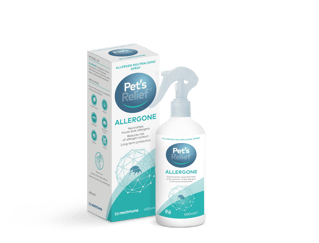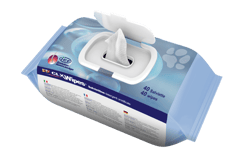Immunotherapy – The only way to treat the cause
The recommended treatment for atopy is immunotherapy. It is the only treatment that stops an allergy from progressing, by making the immune system less sensitive, or totally insensitive, to the allergens that trigger the allergic reaction.
Immunotherapy can be administered subcutaneously or orally. Studies show that around 75% of patients have a positive response to it. The effect is usually seen after 5 months, but can take up to a year.
Immunotherapy is effective, safe for long-term use, and can be combined with other medications.
Read more about Immunotherapy, the allergy treatment-

Immunotherapy is normally administered via injection.
The multimodal approach
A multimodal approach to allergy is very important. In conjunction with immunotherapy, other products can help control the symptoms, as required, such as topical products (shampoos, ear cleansers), essential fatty acids supplements or symptomatic medication.
Products that prevent allergen exposure can be very effective for avoiding symptoms. Although most allergens are impossible to avoid completely, some preventive options can help.
Allergen avoidance
If the allergens that the animal is having a reaction to has been identified it might be quite easy to avoid or reduce exposure to these allergens. For instance reduce the time outside when specific pollen counts are high and cleaning the paws after a walk. Nextmune carry a number of products developed for making the allergen avoidance easy for pet parents. Below are a few exaples.
Pet’s Relief Allergone
...is an innovative allergen-neutralising spray designed to reduce the exposure to house-dust allergens. It provides long-term protection of up to 5 months after a single application.
It can neutralise house dust-mite allergens because of its core of microcapsules filled with a mixture of substances that alter the chemical structure of allergens particles.

It reduces the exposure to dust allergens by forming a polymer film that glues dust particles together to form larger particles, thus stopping them from floating in the air. The aggregated particles can then be removed easily by conventional cleaning.
CLX Wipes
...are practical, sting-free disinfecting wet wipes designed for daily cleansing of pets such as dogs, cats, horses, and other animals. They are particularly useful for cleaning paws, interdigital spaces, skin folds, and lip edges, helping to eliminate dirt and unpleasant odors while moisturizing the skin.

Formulated with chlorhexidine and Tris-EDTA for effectiveness against both bacterial and fungal skin issues.
Topicals and supplements
As an effective add-on treatment, daily supplements of omega-3 fatty acids, as well as treatment with medicated shampoos, spray, gels, wipes or ear cleansers, can alleviate skin reactions and/or minimise the growth of bacteria and yeast.
Bathing can relieve itching and remove environmental allergens from the pet’s skin. It is important to choose the right shampoo, as frequent bathing with the wrong product can cause dry skin. Many allergic patients have ear problems. Choosing the correct ear cleanser and using it properly can help reduce recurrent ear problems.
Short-term medications
In addition, there are a number of short-term medications available that help to control symptoms. These symptomatic medications, such as corticosteroids, cyclosporin, oclacitinib and lokivetmab, are useful for suppressing the allergic reaction, however they do not treat the allergy itself. They can have significant disadvantages and come with side-effects, especially in the long-term.
Our recommendation is to use such products short-term and in conjunction with Artuvetrin® Therapy, to ensure the patient is comfortable, but with a long-term goal of only administering immunotherapy for the patient’s condition.
Pruritic threshold and flare-ups
In patients with a flare-up, the symptoms suddenly appear or become worse. This means that the patient has risen above the “itch threshold”. This can happen for several reasons:
- When there is more contact with allergens
- From a secondary infection (yeast, bacterial, etc.)
- From another skin irritation (due to fleas, swimming, etc.)
With a flare-up, it is important to find the cause and prevent it. If the cause is unknown, it can sometimes be sufficient to relieve the symptoms using temporary symptomatic medication.
